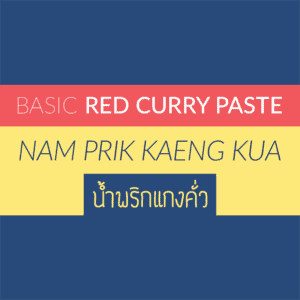Gratiem jiaw (or jeow) is a must have condiment to brighten Thai noodle dishes and soups, especially soup based dishes like khao tom (a salty soup made with leftover rice) and noodle soups like yentafo, and is little more than deep fried chopped or sliced garlic.
Western recipes often scold home cooks over the very idea of browned garlic, which is a misinformed piece of advice based on European cooking preferences. While a bowl of spaghetti aglio e olio favours a softer extraction of garlic, a wok fired stir fry differs substantially. Heat oil to smoking point, toss in your garlic and chillies, followed by remaining ingredients and sauce. The garlic in this case adds a toasty layer that pairs with the smokiness of wok hei.
There is a third way to cook garlic, a Thai cooking method called jeow, also used to make crispy fried shallots, that involves cooking the ingredient slowly in oil over low heat until caramelised. Once you try it you'll want to add it to everything you eat.

There are a few things to keep in mind when preparing crispy fried garlic, and one is to remember the importance of a low and steady heat. The goal is to fry the garlic slowly, which will avoid burning and instead bring out a nutty garlicky flavour with a crispy texture.
Slice several cloves (or heads) of peeled garlic into thin slices or chop the cloves coursely. Aim for about half a cup. You don't need to be too precise, but don't finely mince the garlic and try to keep the size of the pieces fairly uniform. The more invariable the size of each piece, the easier it is to avoid even cooking.
Eye up how much garlic you've got cut and guestimate enough vegetable oil to cover the slices with space for them to swim a little – maybe 250-300 millilitres of oil (a cup to a cup and a half) for half a cup of cut garlic cloves. Heat the oil to medium. Once hot, drop a piece of garlic into the oil to test its readiness; the sliver will begin to bubble when the heat is appropriate.
Chuck all of the garlic into the oil and knock the temperature down to medium low. Fry, stirring constantly, until its colour begins to resemble that of light straw and then a golden amber colour. At this point tip the entire contents of the wok into a heat proof oven dish and leave to cool. The garlic will continue cooking for a short time in the still hot oil, so it's imperative that you remove the pan from the heat at the right time.
It ought to take at least five minutes to fry the garlic, but if you can complete the task more slowly the result will be better.
Some instructions for making gratiam jiaw call to strain the garlic out of the oil, which is an option. Use a fine mesh spoon to skim it off the surface of the oil or place or metal mesh colander over a heat proof bowl and pour the oil through to catch the garlic.
I prefer to leave the garlic in the oil to achieve a double whammy on on the flavour front. The oil carries the garlic aroma while the garlic itself imparts the sweet and nutty flavour that can take a dish from good to outstanding. Whatever you do, even if you decide to strain the garlic, don't toss the oil! Cook with it to make all the things that come out of your kitchen into stuff of magic.





Nicole says
Hello
I was wondering what sort of oil I should be using? I want to make the Burmese potato salad. I only found your site yesterday, as I was looking for vegan Korean recipes, I am really looking forward to trying out a few more your recipes, they look delicious!
Thank you.
Kip says
Hi Nicole,
Go for something mild like a commonplace vegetable oil. I'll update the post to say this too. And thanks for the kind words 🙂 Best of luck in your cooking endeavours.
I reserve the right to improve malicious and trollish comments.